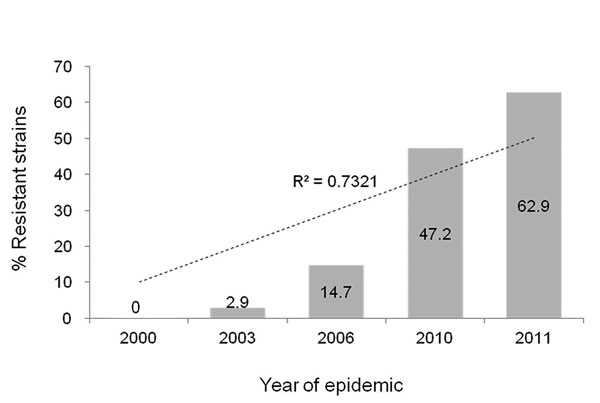Volume 19, Number 8—August 2013
Dispatch
Macrolide Resistance of Mycoplasma pneumoniae, South Korea, 2000–2011
Figure

Figure. . Increased prevalence of macrolide resistance of Mycoplasma pneumoniae strains isolated from children during epidemics of lower respiratory tract infections, South Korea, 2000–2011. During the 2000 epidemic, 0 of 30 strains were resistant, but during the epidemics of 2003 and 2006, 1 of 34 and 10 of 68 strains, respectively, showed resistance. During the 2010–2011 outbreak, 25 of 53 (2010) and 44 of 70 (2011) strains were resistant. Numbers on the bars are the percentages of resistant strains for each year.
Page created: July 19, 2013
Page updated: July 19, 2013
Page reviewed: July 19, 2013
The conclusions, findings, and opinions expressed by authors contributing to this journal do not necessarily reflect the official position of the U.S. Department of Health and Human Services, the Public Health Service, the Centers for Disease Control and Prevention, or the authors' affiliated institutions. Use of trade names is for identification only and does not imply endorsement by any of the groups named above.